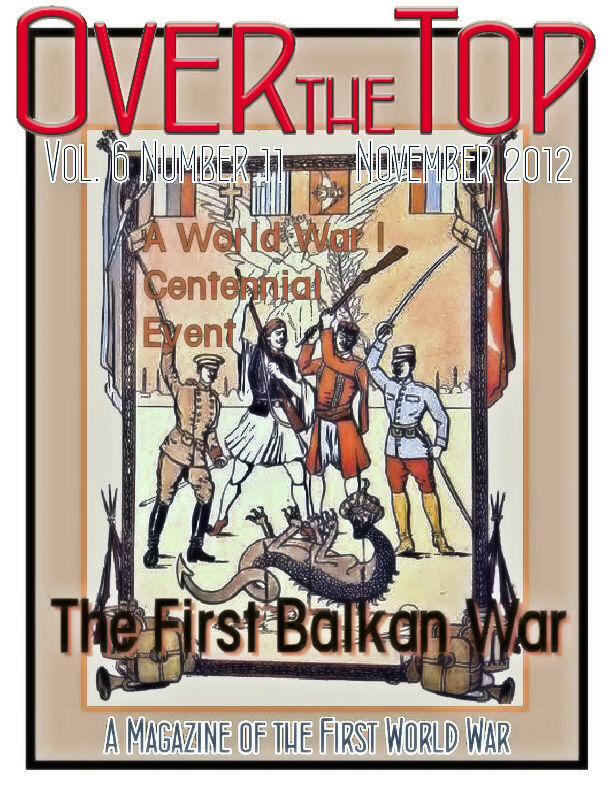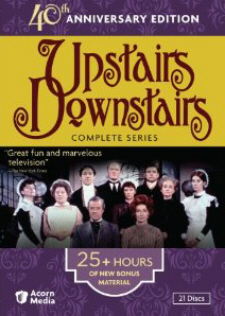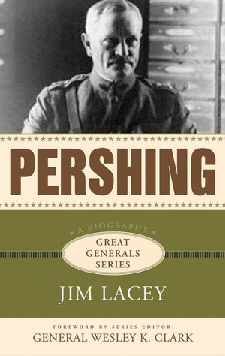


November 1912
Woodrow Wilson Elected President of the United States
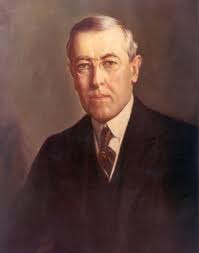
|
Wilson's rise to power was extraordinary. Few have risen from relative obscurity to world prominence so quickly. In 1909 he was the president of a small, elite university; after the Armistice he would be envisioned (albeit temporarily) as the world's one hope for lasting peace.
In 1909 Wilson's progressive programs and innovations as president of Princeton University attracted the attention of the Democratic political machine. They helped elect him governor of New Jersey, but learned to regret it. Instead of following orders, Wilson ended up cleaning house and ridding the statehouse of much deep-seated corruption. Presidential aspirations cut his tenure as governor short. His writing, oratory skills, and progressive accomplishments gave him enough visibility to attract Democrats looking for a national leader. A speaking tour designed to test the waters was a rousing success and Governor Wilson stepped into national politics.
Wilson could not have picked a more opportune time to run. Theodore Roosevelt's dissatisfaction with William Howard Taft's record caused a split in the Republican Party. Roosevelt tried and failed to receive the Republican nomination, so he and his rowdy following left the convention and formed the progressive (Bull Moose) party. This dissension virtually guaranteed a Wilson presidency. This unique election among 3 presidents (one past, one present, and one future) and Socialist Eugene Debs ended with 88 electoral votes for Roosevelt, 8 for Taft, and the remaining 435 for Wilson. Wilson brought a Democratic Congress with him, and the stage was set for domestic progressive reform. After the election, however, he also said, "It would be an irony of fate if my administration had to deal with chiefly foreign affairs." Who knew?
|
TRENCH REPORT: I put off writing this introduction to our 10th Anniversary issue for over a week, but the schedule finally forced my hand. My thinking had been along the lines of a retrospective of some sort, maybe, a top-ten memories list, or some such. However, I finally remembered the insight of a great American philosopher named Satchel Paige with whom I happen to share a birth date — 7 July. My fellow fans of Dr. Paige will recall his most memorable morsel of wisdom: "Don't look back, someone might be gaining on you." So, in this column, I'm simply going to promise our loyal readers more of the same for the future—as many insights and discoveries we can assemble on that most interesting period of history—the Great War of 1914-1918. . .Since our anniversary corresponds with the month of the Armistice, in this particular issue we have tried to emphasize some of the traditions and heroes and personalities of the war (one of whom has made regular appearances in theTrip-Wire), but, as usual, there's a lot of other stuff, too. MH
News from the World War One Historical Association
Click on Title or Icon to Access
|
Armistice-Veterans Day-Remembrance Events
WW1HA N. California Chapters Luncheon
10 November, 10am-2pm,
Francesco's Restaurant, near Oakland Airport
Speaker: Mystery Novelist Jacqueline Winspear
Contact: Sal Compagno - email: sal00@mindspring.com
WW1HA Southwest Chapter Meeting
3 November, 9am-2pm, Includes Fajita Lunch
USS Texas, La Porte, Texas
Remembrance, Presentations, Ship Tour
Contact: Michael Kihntopf - email: kihnt@swbell.net
League of WWI Aviation Historians Meeting
3 Nov, all day, starts 10am
National Air & Space Museum's Udvar-Hazy Center, Dulles Inter. Airport
Speakers include Jon Guttman & Blaine Pardoe
Contact: Carl Bobrow - email: bobrowc@si.edu
WFA East Coast Symposium
10 November; Start 8:30 (Pre-reg. required)
Fort George G. Meade Museum
Speakers include Bob Dalessandro & Corey Reigel
Contact: Paul Cora - email: pbcora@earthlink.net
2013 Events
The WW1HA New York - New England Branch has announced their annual seminar for 2013. It will be held 16 March at the Vassar College Alumnae House in Poughkeepsie, New York. Further details will be available soon.
|
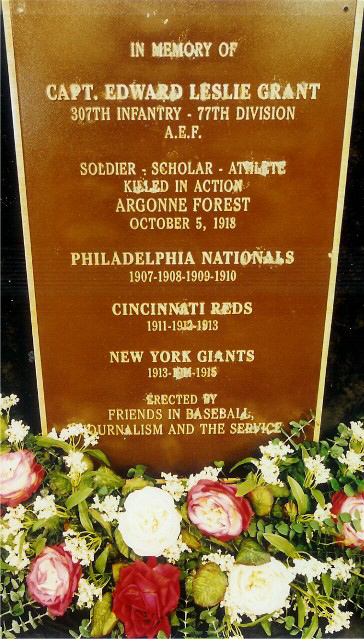
|
Armistice-Veterans-Remembrance
2012
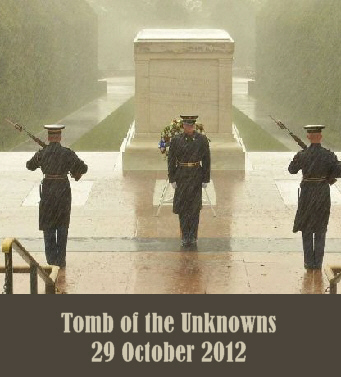
What Hurricane?
This Month's Internet Feature
The Forgotten Salonika Front
An apparent sideline for much of the war, the Salonika Front was where the Central Powers began crumbling in late 1918.
Overview of the Macedonia Front
Balkan Map Kit at FirstWorldWar.com
British Forces on the Salonika Front
Bulgaria's View of Its Involvement in the Balkan and World Wars
Serbian Forces in the Final Campaign
Reports from Franchet d'Esperey and Others on the Victory Offensive
Salonika Campaign Society

Rosemary, Laurel, and the Anzacs
Since ancient times the aromatic herb rosemary has been believed to have properties to improve the memory. Perhaps because of this, rosemary became an emblem of both fidelity and remembrance in literature and folklore. Traditionally, sprigs of rosemary are worn on ANZAC Day and sometimes on Remembrance Day, and are usually handed out by Legacy and the RSL. Rosemary has particular significance for Australians, as it is found growing wild on the Gallipoli peninsula.
Flowers have traditionally been laid on graves and memorials in memory of the dead. Besides rosemary, laurel is also a commemorative symbol; woven into a wreath, it was used by the ancient Romans to crown victors and the brave as a mark of honour. In recent years, the poppy, strongly associated with Remembrance Day (11 November), has also become popular in wreaths on ANZAC Day.
Source: Australian War Memorial Website

This be their epitaph. "Traveler, south
or west,
Go, say at home we heard the trumpet
call,
And answered. Now beside the sea we rest.
Our end was happy if our country thrives:
Much was demanded. Lo! our store was
small—
That which we had we gave—it was
our lives."
L.L., Anzac
From: The Anzac Book, 1922
On the left is a photo of the original Capt. Eddie Grant plaque at the Polo Grounds, New York City. The "Curse of Capt. Eddie" was first identified on the pages of the St. Mihiel Trip-Wire in November 2002 and 2003 (link) (link), became a cause célèbre thanks to the Internet (link) (link) , was faced up to when the San Francisco Giants finally replaced the missing plaque (link), and now rests in peace after the team's subsequent two World Series victories in three years.
|
|
Page Two
|
|
|

Elsie and Marie: The Angels of Pervyse
Many of those [women] who initially rushed to sign up [for war work] had never been farther than the boundary of their village, or town, and had known few people outside their neighbors and, later, those they worked with. Going to war was to be the big adventure. Which brings me to two women who immediately saw the opportunity to blend adventure with service: Elsie Knocker and Marie Chisholm, who, arguably, became the most famous women of the Great War, as news of their courage reached Britain and, indeed, the rest of the world. They became known as the "Angels of Pervyse" after the village north of Ypres where they cared for the wounded for almost four years. (From Jackie Winspear's Blog)
TL
|
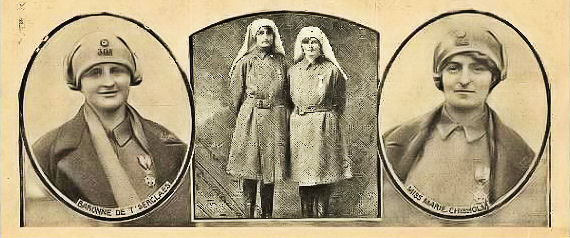
Click Here to read a more about the "Angels".
|
|
|
John F. Elkington
Royal Warwickshires and 1er Régiment étranger d'infanterie
Contributed by Jim Patton
The 1st battalion of the Royal Warwickshire Regiment arrived in France in August 1914 under the command of Lt. Col. John F. Elkington. It was an experienced Regular battalion and Lt. Bernard Montgomery was the adjutant.
The regiment dated from 1674. Originally formed for service in the Netherlands, the regiment was nicknamed "the Dutch Guards" by King William III. They gained Royal status in 1832. The badge bears the image of a "Hart, Ducally Gorged and Chained," a symbol of the House of Lancaster. The record of their service reads like the history of the British Army for nearly 300 years. They raised thirty battalions in the Great War, including three "Birmingham Pals". The regiment was amalgamated in 1968 and their heritage is now with the Fusiliers.
They went into action at Le Cateau, taking heavy casualties. At the rear of the fallback, the remnant of this battalion, along with that of the 2nd Royal Dublin Fusiliers, plus an assortment of unruly stragglers, found themselves in the Grande Place of St. Quentin. Rail transport had been promised there, but none was available. Having covered over 20 miles, the soldiers refused to walk any more. Further complicating the situation was the availability of alcohol.
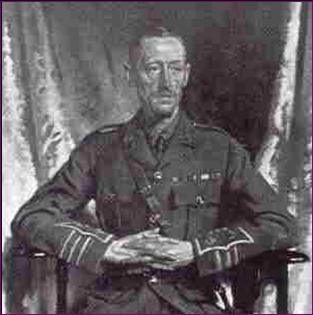
|
Elkington and the CO of the "Dubs," Lt. Col. Arthur Mainwaring (a noted cricket player of the 1890s), asked Mayor Arthur Gibert for help in organizing food, medical supplies and transportation. But M. Gibert had heard the stories coming from Belgium and was terrified that the city would be destroyed by the Germans with great loss of life. He urged the British commanders to join him in surrendering. Having heard vague reports that German troops were encircling the city, and with their men in no condition either to fight or move on, the exhausted officers signed on to Gibert's surrender document. Elkington then left on a recce to find additional soldiers. Mainwaring incredibly ordered the men to stack their arms.
However, before any Germans could be found to surrender to, a troop of the 4th Royal Irish Dragoon Guards came along. Their CO, Major GTM Bridges, recalled later: "The men in the square were so jaded it was pathetic to see them. If one only had a band, I thought! Why not? There was a toy shop handy, which provided my trumpeter and myself with a tin whistle and a drum, and we marched round the fountain, where the men were lying like the dead, playing the British Grenadiers and Tipperary and beating the drum like mad. They sat up and began to laugh and cheer." The Dragoons were eventually able to coax about 440 soldiers out of the city on a 24 hour slog to Noyon, another 20 miles, where trains were available.
On 30 October Elkington and Mainwaring were "cashiered"—dismissed in disgrace. Mainwaring withdrew to private life in England, where he wrote a fussy memoir before his death in 1930; while Elkington, according to a friend, said "there is still the Foreign Legion," and he "set out to make good a name that he felt needed cleansing."
And so the 1st Royal Warwicks soldiered on. Lt. Montgomery didn't spend the war in a POW camp, but was wounded on 13 October, and by Christmas the battalion was ineffective.
On 28 September 1915, the 1er RM/2eme RE attacked at Navarin Farm. Amongst the men of Co. B-3 was Soldat 2nd Cl. Elkington, who had already distinguished himself at Hill 119. As leaders fell, he took charge, attacking until the guns finally caught up with him. He lay in the bottom of a trench for 13 hours until stretcher bearers arrived. He spent nearly a year in hospitals and endured eight surgical procedures. His citation for the action reads:
The Medaille Militaire and the Croix de Guerre avec Palme are conferred upon No. 29274 Legionaire John Ford Elkington of the First Foreign Regiment. Although being Fifty years old, he has given proof during the campaign of remarkable courage and ardour, setting everyone the best possible example. He was gravely wounded on 28 September 1915 rushing forward to assault enemy trenches. He has lost the use of his right leg.
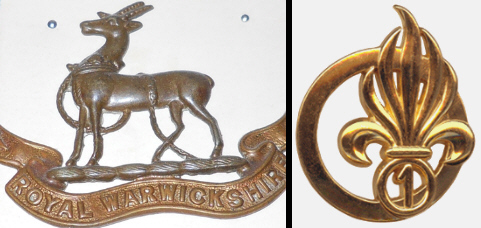
The Regimental Badges Worn by Elkington
Warwickshires and French Foreign Legion
On 7 September 1916 at the request of Lt. Gen. Hunter-Weston, Elkington was restored to his regiment, rank, seniorities, and awards. In October he was received by the King, who pinned on him a brand-new DSO. Deemed unfit for service, Elkington retired to his family's house in Berkshire and became active in local affairs. It was reported that he never wore any of his medals. He died in 1944, and two years later a stained glass window honoring him (and his younger son, lost in the Western Desert) was dedicated by none other than Field Marshal Viscount Montgomery of Alamein, who said on the occasion "he made good more than he lost."
|
|
My World War I Expeditions for Valor Tours, Ltd.

Click on Image to Send Email
|
World War I Headlines
in the 21st Century
|
|
|
Subscribe to Our Online Magazine
|
|

|
|
Page Three
|
|
|
Special Feature
Before Downton Abbey, Part II
|
In the U.S., the Public Broadcasting Network has used the Masterpiece Theatre series for 40 years as an umbrella for presenting the best serialized dramas from the UK. These programs are reliably Anglo-centric, well cast, perfectly costumed, and true to their source material. Downton Abbey is simply the most recent presentation with a season-length focus on the events of 1914-18. Over the decades, Masterpiece Theatre has presented numerous programs that were set in or had major links to the Great War. Here are reviews of three of our favorites, all produced in the 1970s, before 500 station cable and program recording systems, when we reserved Sunday evenings for viewing Alistair Cooke and Masterpiece Theatre.
|
Upstairs Downstairs
First Shown on ITV in 1971
This illustrious Masterpiece Theatre series from 1971-1975 effectively created the fixation so many of us have with "heritage porn." We were quickly engrossed by the lives and fortunes of the Bellamys and their servants, whom we met in 1903 and to whom we said goodbye in 1930. The residents of 165 Eaton Place, Belgravia, experienced in those years the deaths of two monarchs, the sinking of the Titanic, the suffragette movement, the Great War, the Roaring Twenties, and the Crash of 1929—the stunning introduction to our modern world. Both upstairs and downstairs shared in the joys and sorrows of those years. The Great War is covered in season 4, when the focus is on the house's two soldiers of the Great War, Captain (Major, by war's end) James Bellamy and Private Edward Barnes, and James's cousin, the VAD nurse Georgina Worsley.
THE OFFICER, THE PRIVATE, AND
THE VAD NURSE
Captain James was a career Guards officer who served in India but left the army to seek his fortune in the City, where he was never happy. He met the guns of August (literally, for he was at Mons) with the vision of Brooke's swimmer "into a cleanness leaping." James represents the misbegotten modern man, however. His paternalistic concern for his men is outmoded, however sincere, and ultimately useless in the carnage of the Somme and Passchendaele. While lying wounded in the shell hole in 1917, James encountered a German officer finishing off the wounded; James shot him before he could kill James. This serious wounding and near death in a Passchendaele shell hole were a detour for him—he spends all the 1920s searching for a lost world, frantically, and ultimately commits suicide in 1929, having lost both his money and that of Rose, the head house parlor maid. His suicide, in James's own note, "finished what the German officer should have done" in 1917. James's military experience in the Great War is the central metaphor in "Upstairs Downstairs" tolling a dirge for the 19th century and the aristocracy.
Private Barnes, the footman Edward, however, is the resilient, surviving modern man. While James's physical (and spiritual) wounds exemplify one type of survivor of the war, Edward bears the scars of shellshock. His strength to overcome that and face the future is bolstered by his meaningful marriage to Daisy (housemaid) and his supportive "family" of the other downstairs servants. Edward has a difficult time in the 1920s also—he is hopeful that the postwar "fit for heroes" society will help him and Daisy find independent work, but the reality finds them destitute and in need of returning to 165 Eaton Place. They do get back on their feet there and by 1930 move on to work for Miss Georgina in her household as the newly married Marchioness of Stockbridge. Private Barnes is now the chauffeur to a wealthy marquess, heir to a dukedom. Captain James had no meaningful marriage, and he resisted the understanding of his family, who tried to help him.
Georgina begins the war as a cheery debutante, enjoying the attentions of young lieutenants on leave and seeing them off at the depot. She encounters a transport of severely wounded soldiers and decides to train as a nurse. Her stalwart service at the front and her embracing the Roaring Twenties in full swing as a "Bright Young Thing" make her the female icon of the war and its results. Like Edward, ultimately her identity as a true modern enables her to survive both the war and the Twenties. They are both veterans in all senses of the word.
This series handles the Great War with depth and knowledge in many areas, political, military, and social. There are deaths in battle and from influenza; we experience Belgian refugees and doomed aviators. All is presented with sensitivity and realism. It is more than worthy of the epithet classic.
Kimball Worcester
|
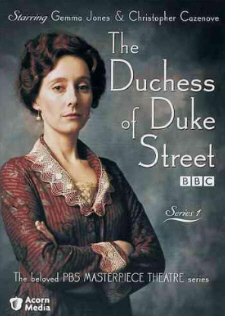
|
The Duchess of Duke Street
First Shown on the BBC in 1976
The Duchess of Duke Street is a 31-episode, 2-season drama which takes place between 1900 to 1925 and does an outstanding job of presenting the sweeping changes that took place in British society over those years. It focuses mostly on working and middle class characters (although in one episode Lord Kitchener makes a brief appearance!) The five episodes that cover the years of the Great War are Episodes 6 through 10 in Series 2.
The "duchess" of Duke Street is Louisa Trotter, a former kitchen maid modeled on London character Rosa Lewis, who, through hard work, toughness, and a few noble connections has risen to be the co-owner and manager of an upscale London hotel. Louisa is played by Gemma Jones, who also portrayed Princess Vicky in The Fall of Eagles, reviewed here last month.
As with most BBC presentations, the acting is nuanced and the characterizations, especially in the supporting cast, are outstanding. Louisa is a complex character, and because of her success in "rising above her class" she often covers her insecurity with a brittleness that is not always likeable. She is surrounded at the hotel by marvelously eccentric and well played staff members, including the aged butler Merryman (John Welsh), who served with Lord Raglan in the Crimea, middle-aged porter Starr (John Cater), who fought with Kitchener at Omdurman, and retired Major Smith-Barton (Richard Vernon), who works as greeter and general assistant and is called to service with the War Office when hostilities break out. Louisa's long-time lover and silent partner in the hotel, Lord Haslemere (Christopher Cazenove), enlists in the Coldstream Guards but over the years of the war his initial enthusiasm fades to a quiet sense of futility and loss. He and Louisa agree to marry after the war but sadly Haslemere dies from his injuries before they can do so.
Through the war period episodes, the series does an excellent job dramatizing the characters' changing attitudes toward the war. In Episode 6, "Your Country Needs You," Louisa nails a picture of the Kaiser upside-down over the toilet as war is declared and her staff members bring out their old medals. Life gets tougher as the hotel deals with rationing, staff shortages, and later a possible bomb in the garden from a zeppelin raid. The ever-practical Louisa learns that things are not always what they seem as she hands a white feather to a potential guest, only to learn he has already received the Military Cross and lost his foot in combat. She treats with disdain another young guest who works at the War Office, unaware that he is a valuable British spy whose "vacations" are trips to Germany.
It's definitely possible to watch just the Great War period episodes and enjoy them for their portrayal of the times, but be advised that without a little online research you won't know the full back story and complex relationships among the characters going back more than a decade before the war begins. Also, each episode is much more interconnected with prior ones than, for example, in The Fall of Eagles, a series in which episode can be viewed as a stand-alone. Diane Rooney
|
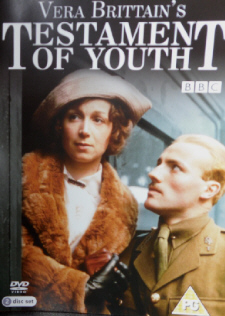
|
Testament of Youth
First Shown on the BBC in 1979
Cheryl Campbell does a magnificent job portraying Vera Brittain in this five-part presentation that closely follows her tragic and haunting war memoir. Trip-Wire readers are probably familiar with the general story of the educated middle class young woman, who serves in England, Malta, and the Western Front as a VAD nurse, meanwhile losing her brother, fiance, and best pal in the war. Viewing this series, however, yields rewards beyond a reading of the famous text. I found that despite the deletion of many the story's details (out of necessity, I'm sure), by putting faces on the participants, timbre to their voices, and showing their meaningful posture and movements, the video treatment of Vera's story strengthened my personal bonds and identification with the characters. I suspect this effect would have been stronger had I viewed the same presentation in person, on stage. This is the reverse of what I usually find when watching filmed or live versions of a good book. The portrayals usually don't counterbalance the missing narrative and descriptions.
By the way, a new filming of Testament of Youth is in the works. I'm dubious that it will be done with the same sensitivity and respect for Brittain's memoir as this series.
A couple of caveats about the 1979 series, though. Apparently, the only DVD-set available for purchase is in the UK format, so U.S. viewers will need the universal-type player. Also, you might want to skip the last episode—it's sort of a postscript to the war story—unless you long for an hour's worth of feminist and pacifist doctrine.
MH
|
|
Remembering Three American Heroes
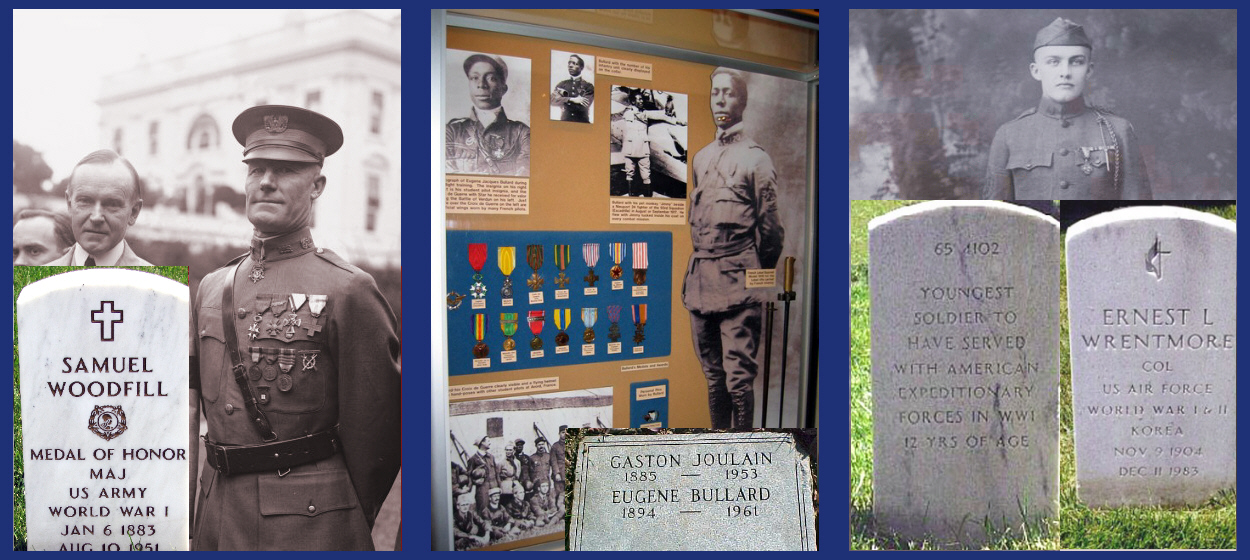
Sam Woodfill, pictured on the left with President Calvin Coolidge, was the most decorated Doughboy and was considered by General Pershing to be the outstanding soldier of the AEF. A prewar regular army NCO, Woodfill was commissioned as an infantry officer in the 5th Division. He received the Medal of Honor for his actions near the village of Cunel during the worst of the fighting in the Argonne Forest. The photo with the President was taken the day he served as one of the pallbearers for the burial of the Unknown Soldier. Woodfill, himself, was later buried at Arlington Cemetery.
The display in the middle is at the U.S. Air Force Museum at Wright-Patterson, AFB in Ohio. It honors aviator Eugene Bullard, who was not welcomed into the American forces after serving with the Lafayette Flying Corps. He had originally enlisted in the French Foreign Legion and served three years as an infantryman, being wounded four times, twice at Verdun. His flying career, because of the wounds and a controversial disciplinary matter involving an officer (Bullard was a corporal), was actually brief, less than a year. However, his flying was notable enough to earn him the nickname "The Black Swallow of Death." He had a colorful postwar career as a nightclub operator in Paris and member of the French underground during the occupation. He eventually escaped back to America. Eugene Bullard is buried in his Foreign Legion uniform at the Federation of French War Veterans Cemetery in Flushing, New York.
Another 5th Division member, Ernest Wrentmore, served the United States in three wars and, like Sam Woodfill, fought with considerable distinction in the Argonne Forest (where they crossed paths). There is one detail, however, that sets Wrentmore apart from all the other troops who served with the AEF. The photo shown was taken after the Armistice when Wrentmore was all of 14 years old—he actually had enlisted when he was still 12 years old! Later, he served in the Army Air Force and U.S. Air Force, attaining the rank of full colonel as an intelligence officer. After his death, a bill was introduced in Congress to award Wrentmore the Medal of Honor, but it was not passed. His grave marker at Arlington includes an entry on the back citing him as the AEF's youngest soldier.
|
|
|
 |
Jim Lacey's
Pershing
Reviewed by Bruce Sloan
|
|
General John Joseph "Black Jack" Pershing was born on the eve of the Civil War, on 13 September 1860. Soon afterward:
At 4:00 p.m. on June 18, 1863, thirty southern raiders commanded by Clifton Holtzclaw stormed into Leclede, Missouri, shot up and sacked the town...Thus at the tender age of three, John Joseph Pershing, future commander of all American forces in Europe during World War I, chief of staff of the army and General of the Armies of the United States, had his first taste of war.
Even with a middling scholastic record at West Point, he became first captain of the Cadet Corps and lifelong president of the class. He was a "hop man," as he loved dancing and "enjoying the society of women."
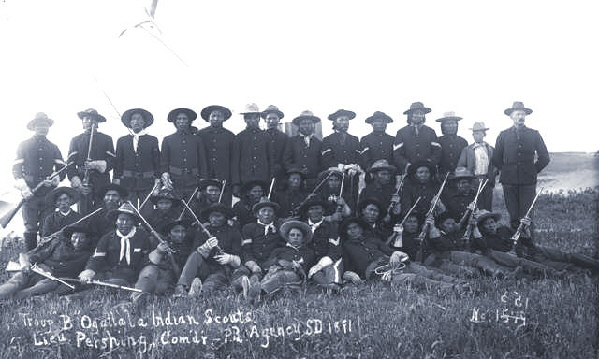
Commander of Sioux Scouts, 1891
His first posting was Fort Bayard, NM, where he pursued Chief Magnus, last of the Apache renegades. After several postings, he was with General Nelson Miles and the Sixth Cavalry in pursuit of the renegade Sioux from Rosebud Pine Ridge Reservation, and he was in the Indian Wars until their conclusion in 1891.
After four years as commandant of cadets at the University of Nebraska, he was posted to the Tenth Cavalry, the famed Buffalo Soldiers. Due to this service, he was later given [a more severe version of] the moniker "Black Jack," from the West Point cadets he taught as a tactical officer. "It was a nickname not meant to flatter," as he was rather unpopular and "the poster boy of a martinet." This experience taught him how far he could push men.
Again serving with the Tenth Cavalry, he was in Cuba for "that splendid little war," then after a short stint in Washington, he was posted to the Philippines, where he gained a reputation with the Moros as an honest man who kept his word. So impressive was his 1903 march around Lake Laneo, that some Moros later used this event as the basis for their calendar.
Now married, Pershing was posted to Japan, where he observed the end of the Russo-Japanese War. Posted again to the Philippines, he perfected his organizational and training theories. Returned to the United States due to health problems, he was then sent back to the Philippines as military governor of the Moro Province until 1913.
Sent to San Francisco to command the Eighth Brigade, the family now included four children, and it became one of the happier periods of his life. The brigade was ordered to El Paso, so he was not here when his wife, Frances, and their three daughters were killed in the fire at their home. Left with only his son, Warren, this tragedy changed him, rendering him even more silent and introverted than he had been prior to meeting Frances. This pain was to remain with him for the rest of his life.
After Pancho Villa's raid on Columbus, NM, in 1916, Pershing crossed into Mexico, with his aide George S. Patton and a hodgepodge of units and personnel. Although this invasion was inconclusive, Pershing now commanded the largest field army of the United States since the Civil War, and the now thoroughly trained regulars would provide the nucleus for the AEF in World War I.
The larger portion of the book is about World War I, the battles, his command style, and his efforts to keep the AEF as a separate force. As this audience is conversant with World War I, there is no need to detail this period, except to say that Pershing proved his organizational, training, and command skills.

The Old Soldier During WWII |
So successful was this effort that he returned to accolades and eventual appointment as chief of staff of the Army, where he was instrumental in preparing for the next war.
After retirement, he was appointed to head the American Battle Monuments Commission, where his staff included Major Dwight D. Eisenhower. For the next ten years, he wrote his memoirs, which earned a Pulitzer prize, and stayed active as a leading advocate for military preparedness, even though he still misunderstood the roles of air and armor in a modern war. He was alarmed by the rise of Adolph Hitler and predicted another European war.
At the beginning of our involvement in World War II, he lived at Walter Reed Army Hospital. While he was disappointed that he was not consulted more there, he was remembered in the Philippines, where an old Moro sultan greeted MacArthur with the statement that he had submitted to Pershing and that the Moros had now proven their loyalty by killing Japanese.
John Joseph Pershing died peacefully on 15 July 1948, and 16 active-duty generals marched behind his coffin, including Dwight Eisenhower and Omar Bradley. His era may be over, but his ideas, theories, and accomplishments still form the basis for the United States Army organization, training, and preparedness.
-Bruce Sloan
Pershing, Jim Lacey, Great Generals Series, Published by Palgrave Macmillan, 2008, ISBN: 978-0230614451.
|
|
|
|










